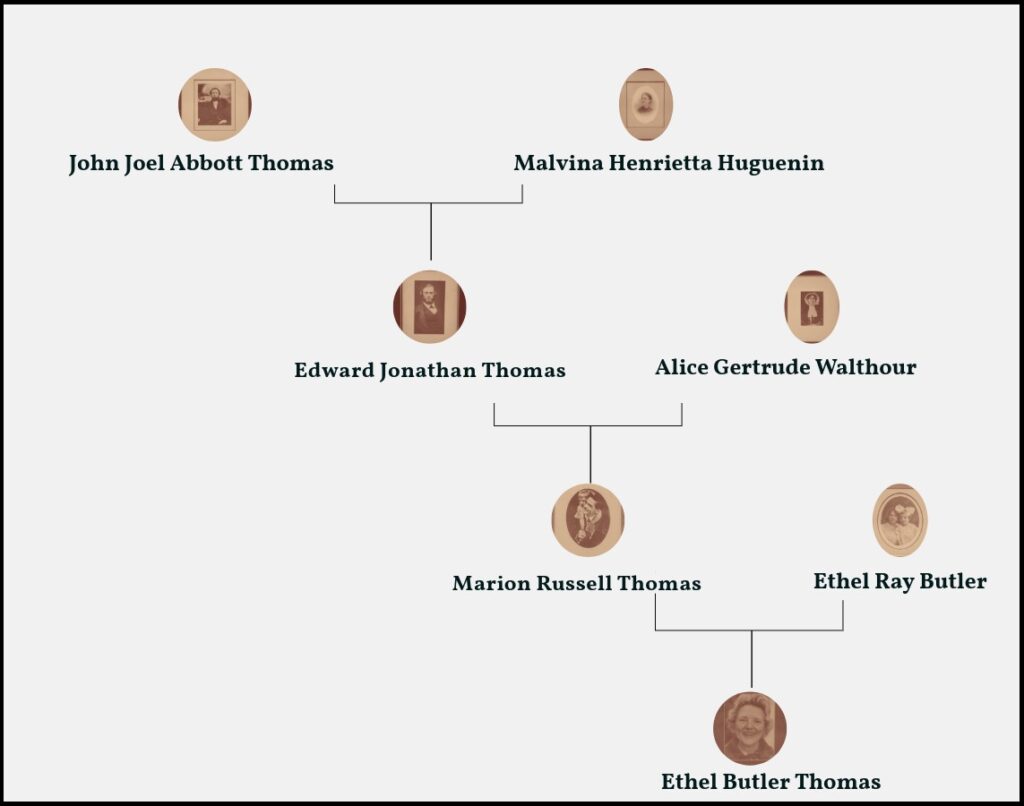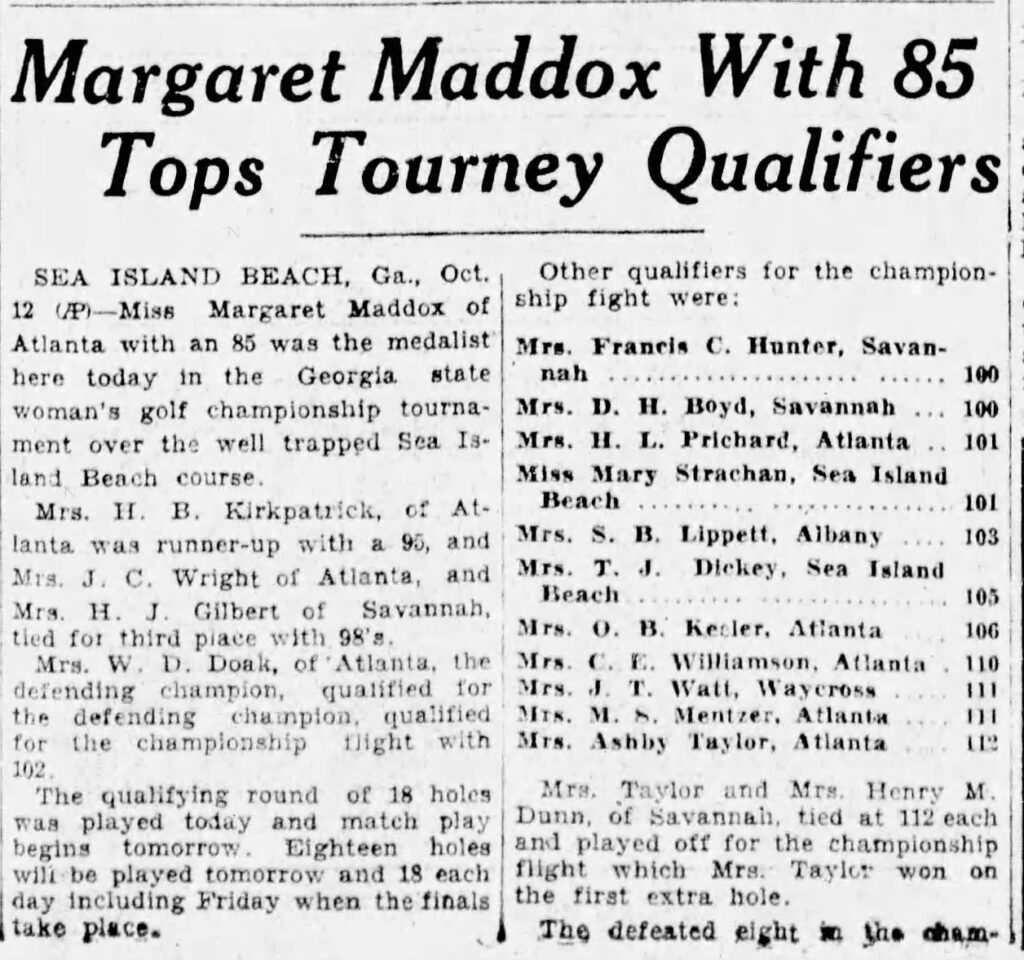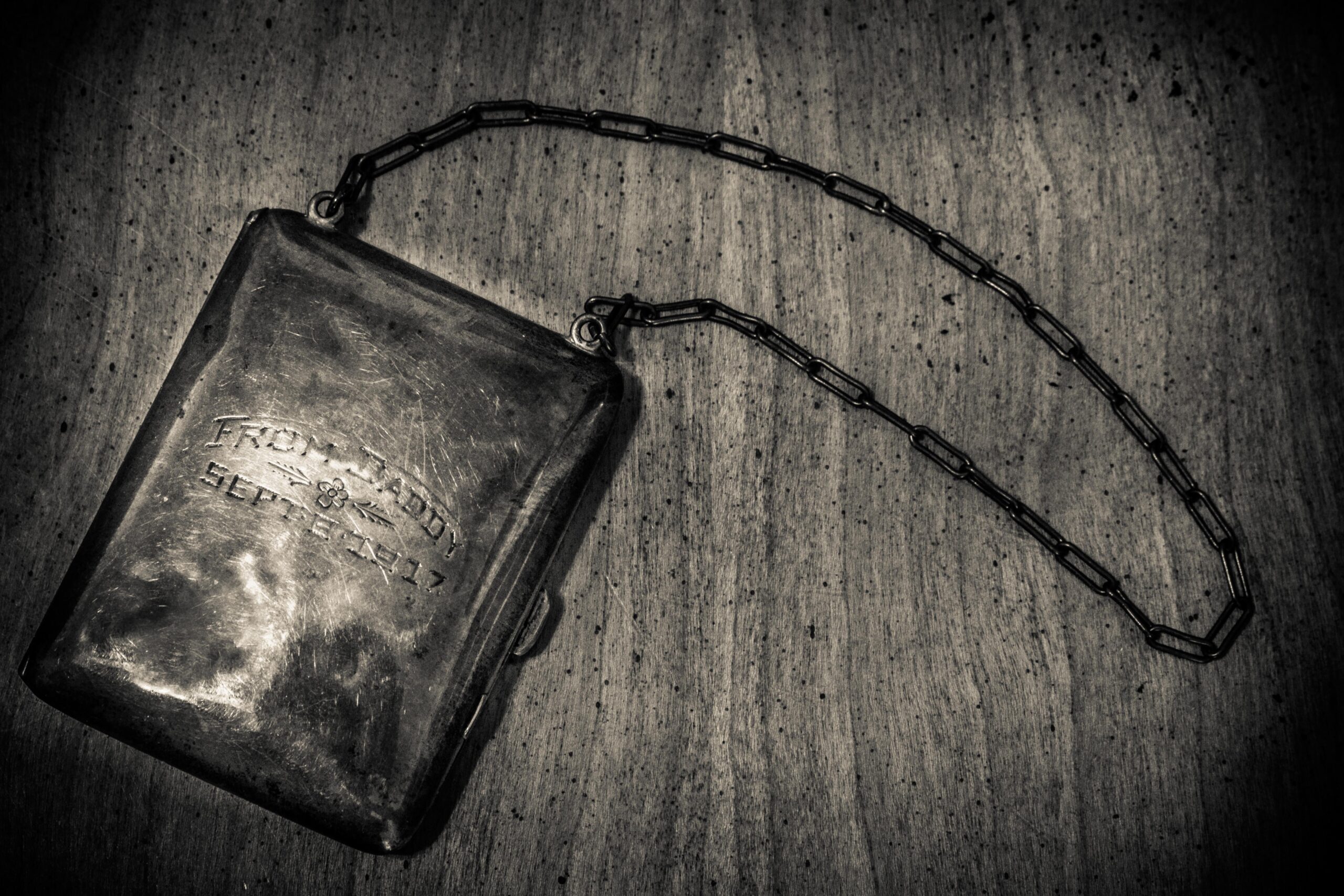
Putting together a family “tree” is more complicated than I thought. Especially to someone who struggles with basic Excel skills or doesn’t know exactly how to manipulate a plug-in for a website (yet). After attempting some screen shots of trees from the genealogical sites I use, I decided to use Adobe Express to see if there were some templates on there. Bingo! It’s not perfect, but it will help visualize some ancestral lines.
I’ll start with my grandmother, Ethel Butler Thomas Hunter. She is the main source of the family artifacts I now own. My grandmother was born in Savannah, GA in 1905 to Dr. Marion Russell Thomas of Savannah, GA and Ethel Ray Butler of Baltimore, MD. She was born at the intersection of E. Oglethorpe Avenue and Abercorn where her parents lived after a brief time on McDonough Street following their marriage in a quiet ceremony at St. Mary’s Episcopal church on Roland Avenue in Baltimore in 1903. Their first two residences were across from the Colonial Park Cemetery and still exist today! If walls could tell their stories, I wonder! Colonial Park is also where my mother and uncle would play games during their youth, even establishing the tradition of hunting Easter eggs there in their early years. By 1945, after my grandparents left Savannah, the tradition remained as an homage to them, which I learned from a clipping from my grandmother’s large collection of news items she kept in a huge red leather “folder” with her initials.

My grandmother spent 10 years with both parents as their only child, but her parents divorced in 1916, and her father retained sole custody. When doing research on her mother, she seemed to all but disappear in public notices after the divorce.
By 1924, my grandmother headed to Vassar College in Poughkeepsie, NY, a women’s institution at the time. My mother would attend there as well, graduating in the class of 1958. Searching the Vassar archives and Vassar College history, I was so pleased to find some photos of my grandmother: her freshman class photo (second from left on front row–such short, curly hair!), a shot of her dancing and smiling broadly on stage, and a post-graduation shot with friends in 1928 (center figure). She was represented in the 1927 college publication Vassarion with student names and addresses. What struck me most about the last resource is that she was practically the only southern woman in her class. It made me laugh because I, too, went to a northern institution where 3% of students were from foreign countries and 2% of students were from the South.
In the 1926 Vassar College Bulletin Annual Reports, there is a section on College Health that mentions that “[n]ext to swimming…golf is endorsed by leading authorities….The chief reason advanced is that while most women after marriage do not continue the more violent game of tennis, much less hockey or basket ball, American life is now amply provided with golf courses, and all healthy women can continue this form of exercise. The gap between violent exercise of college and the almost complete indifference to exercise after college is thus bridged” (Reports of officers, v.16, no.3 1926, p. 16)
Thankfully, times have changed! At Vassar, women competed in many “violent” sports as students. Their field day photos from 1928 are a testament to women participating in virtually every sport a man did at the time. Clearly, however, the concern after college was that graduates would have very little opportunity (aside from swimming, the recognized “best exercise for women”) for keeping their health up!
Oddly, though, my grandmother’s greatest passion in life would be golf. Vassar desired to develop a golf course in 1926 to keep up with neighboring academic institutions, so my grandmother started with her college friend and never stopped until about age 100. She took lessons by some of greatest golfers in history, also playing by herself with a singular caddy as women were not allowed to play many courses in the South.
By 1931, she’s married to my grandfather Francis Cornelius Hunter (aka “Bill”), and I found her in the papers competing against other women in a golf tournament at Sea Island, Georgia. She would continue to compete for the rest of her life, bridging her violent games in youth with her competitive spirit in life!

In her 90s, my grandmother was interviewed by Golf & Travel magazine for an article called “The Iron Maiden,” which finally convinced me to take golfing lessons so I could play with the amazing golf legend of my family (I was the only one who never took up golf; I played tennis among other violent sports like soccer). I had in my head that when we finally played golf together, it would be some Hallmark movie moment—the two of us walking the course, enjoying our outing, and finding it fun to see who got a better score (reminder: I was in my 30s and my grandmother in her 90s).
It was nothing like that at all. At all. She would go up to the tee, put her ball down, never take a practice swing, execute a perfect swing, and the ball flew straight as an arrow toward the flag on the green. When it was my turn, my grandmother looked at me with a keen eye, then corrected me at every breath I took: “Keep your head down!” “Where are you aiming?” “Bend your knees!” I look back on this moment with such joy now, but I remember thinking then, “Back off Grandma!” There would be no Hallmark movie or card that could capture this beautiful relationship we had. And it was beautiful, just not like my other friends had with their grandparents. She was tough, she was always on the move, and she could hold her own on just about any topic. When I visited her in my youth, she arranged tennis lessons, sent me all over Hilton Head Island on a bike to attend summer camps, introduced me to her friend’s grandchildren, and corrected my grammar at every turn. I would complain that I didn’t want to wear skirts at her many cocktail parties, and we’d go round after round arguing about the appropriate attire for any occasion. When I left for home to Atlanta, she’d start to cry, and so would I with a deep pain in my heart.
Occasionally, I would ask my grandmother about her mother, and I would get snippets here and there. She was from Baltimore. She worked in an auction house at one time in Atlantic City, and she would visit her sometimes. Her father did later remarry, but to a very young woman who was 22 when her father was 58, which was never given much more than a scrunched up bitter look from my grandmother to show her displeasure about it. But the divorce story kept her tight lipped about the relationship, and I think that particular part of her upbringing, being the child of divorce in a time when divorce carried a stigma, made her feel only what I can describe as approaching shame.
Whenever I queried my mother on the subject sometimes, she mentioned that she didn’t know the full story, but she thought her mother told her that “Ganny” tried to stab her grandfather “Gaga,” and that Ganny was not mentally stable—thus the divorce. In searching archived newspapers in Georgia, I witnessed the dreary saga unfold where Ethel Ray Butler (my great-grandmother) didn’t try to stab my great-grandfather. Rather, I found this account in the Atlanta Georgian on Nov. 15, 1915: “Mrs. Ethel Thomas, wife of Dr. Marion Thomas, a prominent physician, to-day is under $500 bond, charged with assault with intent to murder her husband, as the result of a shooting last night at their home. Following a party which Dr. and Mrs. Thomas gave for a few friends, they were heard quarreling by neighbors. She remonstrated with him for neglecting her, it is alleged, and fired four times at him with a revolver. None of the shots took effect. Several years ago divorce proceedings were initiated, but later the couple became reconciled.”
I’ve known this story over a year now, but I remember when I first did a newspaper search online. I was VERY new to the process of tracking down ancestors through various online archive methods, and I was just shocked at this popping up on my phone screen. I was so new to it that I had to take a screen shot of it because I had no clue other than typing in “Dr. Marion Thomas” and didn’t have the slightest idea about how to forward what I had discovered. Since then, I have found other paper notices covering the ensuing divorce proceedings, all covered by Atlanta news outlets (oddly, not the Savannah news resources). I’ve even recovered the documents of the divorce complaint and decision rendered in the Chatham Superior Court June term of 1916. The documents follow a familiar pattern of other divorces of the times as detailed in public accounts. The wife is someone who fails her wifely duties, likely drinks, and is irrational, “often threatening the petitioner with violence, without the slightest cause;” the husband is someone who has done everything in his power to provide for a wife who has “not the least cause to complain of your petitioner.”
And then there was these nagging internal questions: “Four times and missed?” Did she really try to kill him, and was she really such a bad shot in tight quarters? Where was my 10-year-old grandmother at the time? Marriages go through some real issues in life, so saying “not the least cause” in the divorce documents (which Ethel Ray contested in the trial) was a mental red flag to me. Because I have read so many papers now of this time period, women who did get divorced, without a security net, especially financially, could face enormous challenges ahead. My great-grandfather was awarded sole custody (against the wishes of now ex-wife), and the story of my great-grandmother fades from there.
I think of my grandmother, only age 10 in 1916, at the time of the divorce. By 1917, she would receive a silver, hinged wrist purse for her birthday, with her initials on one side, and “From Daddy” on the other side with her birth date. It has a mirror inside, and two spots to hold nickels and dimes.

My grandmother gave it to me when I turned 11, and someday it will be passed on to one of my girls. My grandmother also gave me a gold locket (the locket featured in this blog), in which there is a photo of my great-grandmother Ethel and on one side, and one of my grandmother Ethel as a baby on the other side. Behind the plastic cover of each photograph is a singular strand of hair from Ethel Ray. That one locket holds the two Ethels together, frozen in time, in a bond of mother and daughter that we’ll never really know enough about other than to say they loved each other in the time they had together. I would learn more about that relationship a bit more in some cryptic letters (more transcribing I had to do) from my grandmother’s “Cousin Rosa,” which is a post for another day.






